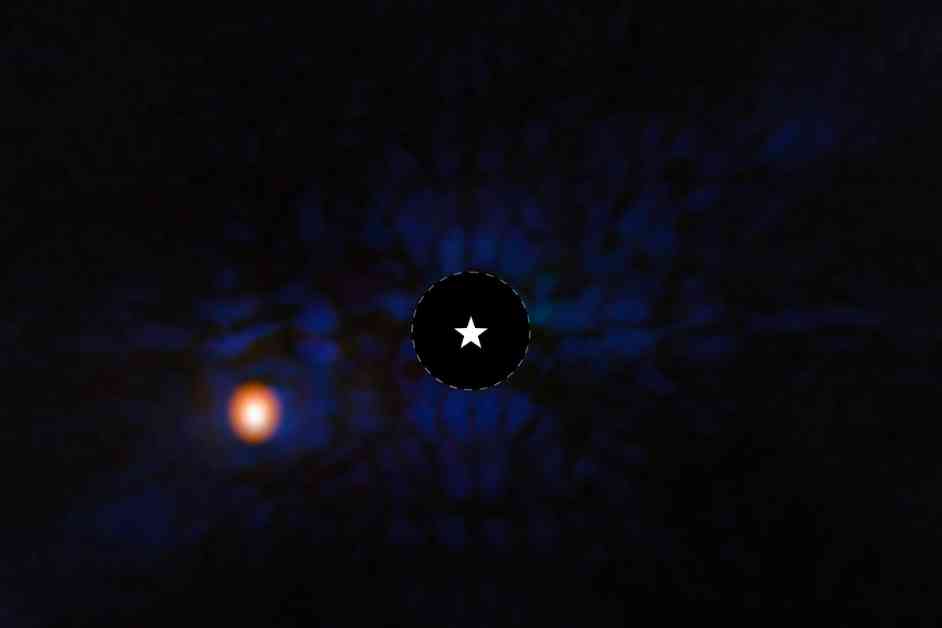Astronomers have recently captured close-up images of a massive exoplanet called Epsilon Indi Ab. This Jupiter-like planet is six times the size of Jupiter and is located just 12 light-years away from Earth. What makes this discovery unique is that it is the first time an extrasolar planet has been directly imaged using the James Webb Space Telescope.
The planet, which appears as a bright orange circle in the images, is considered one of the coldest exoplanets ever observed. According to astronomer Elisabeth Matthews from the Max Planck Institute for Astronomy in Germany, if confirmed, this planet would be the oldest and coldest one to be imaged so far.
Typically, astronomers detect exoplanets by observing how they pass in front of their host stars or by measuring the gravitational effects they have on their stars. However, direct imaging of exoplanets is rare, especially when they are cold and distant like Epsilon Indi Ab.
The discovery of Epsilon Indi Ab opens up new possibilities for understanding the formation and evolution of planets in mature systems. By studying the spectrum of light from the planet, researchers hope to gain insights into its composition and atmosphere, shedding light on its origin and development within the primordial nebula where its host star formed.
Furthermore, Epsilon Indi Ab is part of a triple system that includes two brown dwarfs orbiting the star at a considerable distance. This unique system provides astronomers with a rare opportunity to study different types of celestial bodies in close proximity.
The successful imaging of Epsilon Indi Ab marks a significant milestone in the field of astronomy and demonstrates the capabilities of advanced telescopes like the James Webb Space Telescope. As researchers continue to explore the universe and discover new exoplanets, the study of distant worlds becomes increasingly important in unraveling the mysteries of our cosmic neighborhood.






